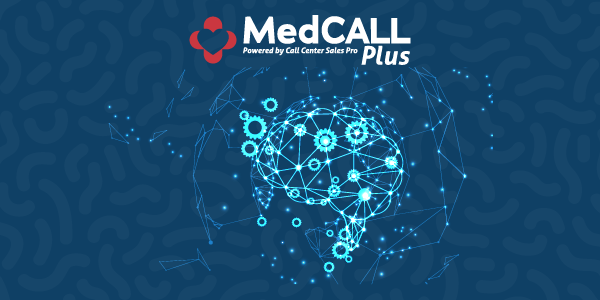How Medical Technology Improves Patient Satisfaction
Today’s medical landscape is run by clerical medical technology. Advanced software systems allow for real-time tracking of patient health data, predictive analytics, and integrated care systems. Medical technology improves patient satisfaction by ensuring accuracy, efficiency, and timely delivery of medical services. Even though many healthcare systems are very digital, it still doesn’t mean they use up-to-date tools and techniques. Improved medical technology allows health systems to communicate with their staff and patients, integrate with all existing systems, and are easy to use.
1. Impact of Improved Medical Technology on Patient Care
Enhanced Diagnosis and Treatment
Telemedicine and remote patient monitoring emerged as game-changers, allowing for remote diagnosis and treatment, exponentially increasing healthcare access. Artificial intelligence and machine learning are now employed to analyze patient data, predict health risks, and suggest appropriate preventive measures. Modern medical technology has improved the quality of patient care and increased the accuracy and speed of diagnosis and treatment.
Improved Patient Communication
Technology has significantly improved patient communication with healthcare providers and administrative staff. Patient portals, an Electronic Health Records (EHR) product, offer an efficient platform for patients to communicate with their healthcare providers. They can easily schedule appointments, request prescription refills, and view their health records, all at their convenience. Additionally, these portals facilitate direct, secure messaging with healthcare providers, promoting timely and efficient communication. For administrative staff, advanced scheduling systems and automated reminders have streamlined administrative tasks, reducing wait times and enhancing patient satisfaction. Perhaps most importantly, these digital innovations have made healthcare more transparent and fostering a sense of empowerment and trust in the healthcare system.
2. The Correlation between Technology and Patient Satisfaction
Faster and More Accurate Services
Improvements in medical technology have paved the way for faster and more accurate services, which align directly with patient preferences. Advanced diagnostic tools and integrated health records systems expedite diagnosing illnesses and devising treatment plans, reducing the waiting time that can often cause patient anxiety. Technological advancements make the administrative side of identifying busy seasons and scheduling easier. This speed and accuracy improve the efficiency of healthcare services and build patient trust, as they feel reassured knowing that their health is managed using the most accurate and up-to-date information. Ultimately, this improves patient satisfaction, as individuals promptly receive high-quality care tailored to their unique needs.
Patient Engagement and Comfort
Improved medical technology has also significantly elevated patient engagement and comfort, increasing satisfaction. Methods like Open Notes allow patients to access their medical records and notes written by their healthcare providers. This transparency fosters a sense of involvement in their healthcare journey, as they can fully understand their health status and the rationale behind prescribed treatments. Furthermore, digital tools like mobile health applications and wearable devices empower patients to monitor their health in real-time, actively engaging them in their care. Heightened engagement, combined with the comfort of having healthcare access at their fingertips, amplifies patient confidence in the healthcare system and enhances overall patient satisfaction.
3. Case Studies Demonstrating Improved Patient Satisfaction due to Improved Medical Technology.
MedCall Plus has been consulting and working with medical health systems for 25 years, and through partnerships with clients, they have seen excellent results when they embraced improved technology and methods. Two examples below are current clients of MedCall Plus.
Nephrology & Hypertension Medical Associates
- Custom-built on-call schedule.
MedCall Plus programmers diligently input the client’s intricate physician OnCall calendar into the MC+ Amtelco Genesis system, which ensures that the MC+ monthly schedule perfectly mirrors the client’s requirements. By doing so, it streamlines the client’s workload, allowing them to focus solely on providing necessary updates when needed.
- Technological Efficiencies Eliminate unnecessary billable.
Part of the MC+ implementation process is 90 days of thorough account monitoring to ensure the package is perfectly tailored. By leveraging the insights gained from the previous provider, MC+ met the client’s needs with only half the requested minutes; this resulted in an ecstatic client who enjoyed a remarkable 50 percent savings, courtesy of MC+’s reduction in base minutes and the addition of a front-end greeting.
Orthopaedic Medical Group
Orthopaedic Medical Group of Tampa Bay saw the following results when they upgraded their answering systems and fully integrated their internal call center with MedCall Plus:
- Reduced Call Handle Times: MC+ achieved a 50% reduction in average call handle time, resulting in higher patient satisfaction.
- Faster Answer Time: Calls are now greeted within 15 seconds, a reduction from the previous average of one minute.
- Increased Appointments: 6,200 appointments were booked per month, raising the number of patients seen monthly.
- Expanded Practice: OMG recently launched two new branches, and MC+ successfully handles the additional administrative workload.
- Lowered Abandonment Rate: Abandoned calls have been reduced from over 15% to less than 5%.
In conclusion, improving medical technology has proven to be a game-changer in the healthcare industry. As illustrated by the case studies, the power of medical technology can successfully enhance patient satisfaction, streamline administrative tasks, enable real-time health tracking, and promote patient engagement. As we look forward, the digital evolution will continue to shape the future of healthcare, promising even more incredible advancements and improvements in patient care.

